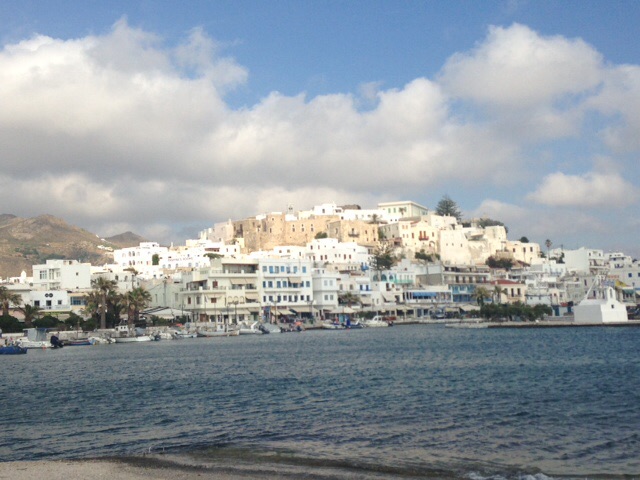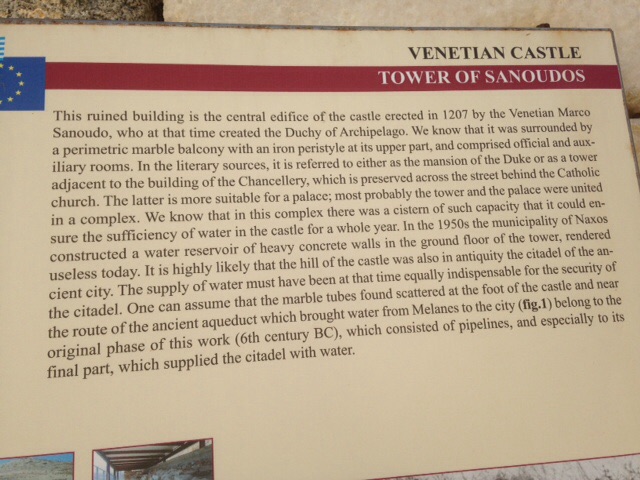As a travel destination Naxos, the largest of the Cyclades, provides the opportunity of a balanced experience of both culture and nature. Naxos town (Known as Chora) is a postcard worthy classic Cycladic town with a twist: the Castle on the hill as well as the labyrinth design of its old town, reminiscent of it’s Venetian alleyways, make it feel a bit Italian.
Coming in from the port, the one striking image is that of the Palatia islet, home to the Portara, symbol of Naxos, a lonely freestanding marble door. This 2500 year old structure is the only surviving portion of an attempted Temple of Apollo, ancient structure that never got completed and, over the years, got dismantled so the marble can be used in the building of the town. Impressive in it’s size and precision of the stone cut, the Portara is the favourite place to watch the sunset from, the evening pilgrimage of every good tourist.

As for Chora, the most interesting part, as mentioned, is the old town, clustered atop the hill above the harbor. To understand the town one must first understand the history. After the 1204 sacking of Constantinople, Venetians siezedmany of the Aegean islands. Marco Sanudo captured Naxos in 1207 and united these under the Duchy of Naxos. Eager for independence from the Doge in Venice he eventually broke away from the Republic and allied himself with the Latin Emperor, thus becoming the Duke of the Archipelago. His allies and descendants ruled directly for 300 years.
The old Venetian nobility devised a class system which is still apparent in the layout of the town itself. There are two distinct neighbourhoods: the lower Bouros, with narrow lanes and modest size dwellings, where the native Greeks lived, and the higher up Kastro, more palatial in appearance, as it was once occupied by the Venetian noblemen and their families. The Castle and Catholic Cathedral were founded by Marco Sanudo himself, and Venetian-style houses in the Kastro still bear the old families’ coats-of-arms.
In an old tower of the Castle one finds the Venetian museum, which I visited. It’s filled with antiques and quite well provided for, considering it is a private museum, founded by a direct descendant of the most notable of the old families, Barozzi – della Rocca.
The waterfront is more typically Greek, happy and carefree and filled with cafes and restaurants. The food is fresh and of outstanding flavour….and the Greek salad comes with a sheep worth of feta, so don’t try and loose weight here 🙂









